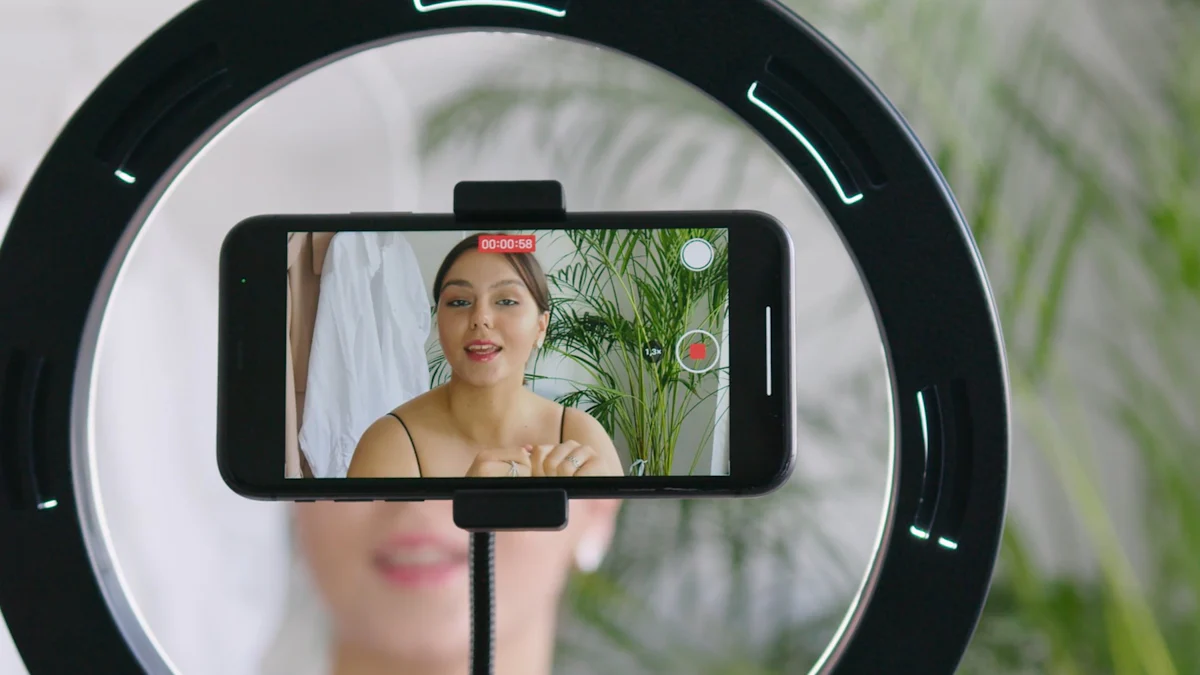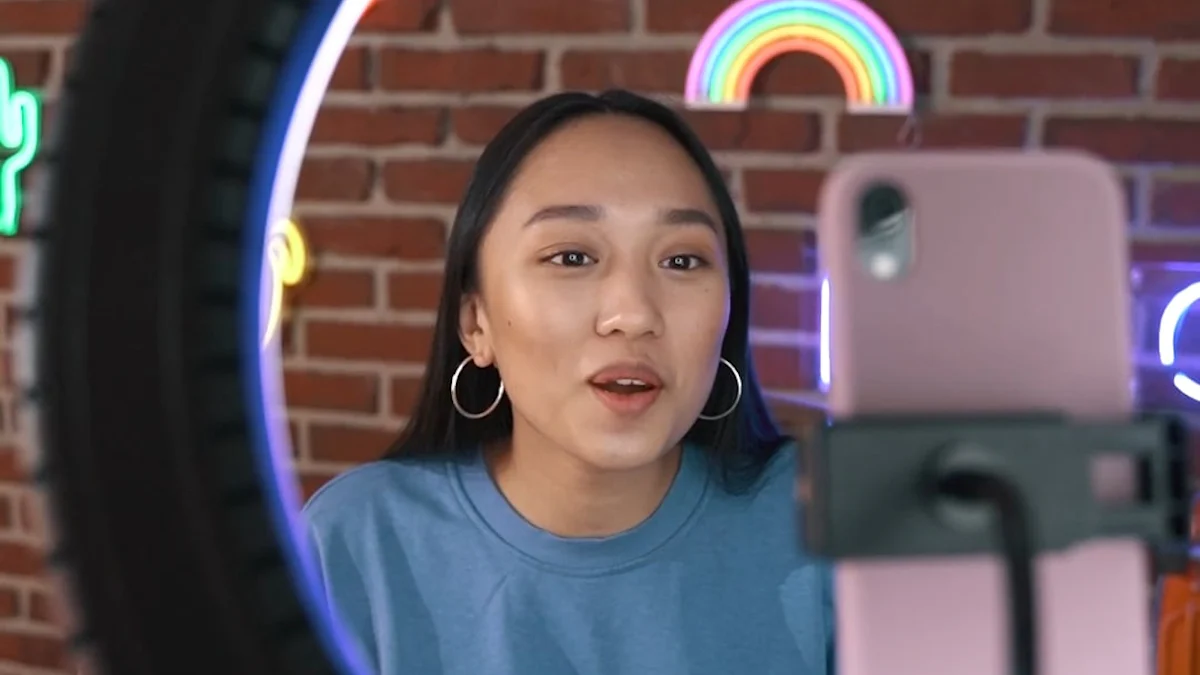Influencer Marketing Meaning and Real Success Stories

Influencer marketing connects brands with individuals who have the power to sway their audience’s opinions. It’s not just about promoting products; it’s about building trust and creating authentic connections. When you see a trusted influencer recommend a product, you’re more likely to believe in its value. That’s the magic of influencer marketing.
Why is it so effective? Because it works where traditional ads fail. Studies show that 63% of consumers are more likely to buy from influencers they trust. Brands also report an average return of $4.21 for every $1 spent. These numbers prove that influencer marketing meaning goes beyond buzzwords—it delivers real results.
Success stories like Huda Beauty’s rise to 53 million Instagram followers or Daniel Wellington’s explosive growth highlight how this strategy transforms visibility. Whether you’re a small business or a global brand, understanding influencer marketing meaning can unlock new opportunities for growth.
Influencer Marketing Meaning and How It Works
What Is Influencer Marketing?
Influencer marketing is a strategy where brands collaborate with individuals who have a strong and engaged following on social media. These influencers use their credibility and authenticity to shape consumer opinions and drive purchasing decisions. Unlike traditional marketing, which often feels impersonal, influencer marketing builds trust and connects with audiences on a personal level.
Why does this matter to you? Because it allows your brand to reach the right audience with precision targeting. Influencers act as relatable voices, making your product or service feel more accessible. However, success depends on choosing the right influencers and maintaining transparency in your partnerships. When done right, this approach can transform your marketing efforts into a powerful tool for growth.
Types of Influencers
Mega, Macro, Micro, and Nano Influencers
Not all influencers are created equal. Each type offers unique benefits depending on your goals. Here's a breakdown:
| Influencer Type | Follower Range | Engagement Rate | Key Characteristics | Impact on Marketing Strategies |
|---|---|---|---|---|
| Nano | < 10,000 | 3.69% | Close relationship with followers, focused audience | Ideal for brands wanting to increase engagement and authenticity in niche markets. |
| Micro | 10,000 - 100,000 | Double the overall average engagement rate | Trusted voices in specific niches, highly engaged audience | Effective for marketing niche products and building brand trust. |
| Macro | 500,000 - 1,000,000 | N/A | Established voices with broad reach, recognized in their industry | Useful for brands looking to expand into new audiences or increase visibility. |
Nano and micro influencers excel at creating authentic connections with niche audiences. If you're targeting a specific group, these influencers can deliver high engagement. On the other hand, macro and mega influencers are perfect for boosting visibility and reaching broader audiences. Understanding these types of influencer marketing campaigns helps you align your strategy with your goals.
Platforms for Influencer Marketing
Social Media Platforms Like Instagram, TikTok, and YouTube
Social media platforms are the backbone of influencer marketing. Each platform offers unique features that cater to different content styles and audiences.
- Instagram: Known for its high-quality visuals, Instagram is a favorite for beauty, fashion, and lifestyle influencers.
- TikTok: With its short-form videos and viral trends, TikTok attracts younger audiences and fosters creativity.
- YouTube: Ideal for long-form content, YouTube allows influencers to create in-depth product reviews and tutorials.
For example, Instagram and TikTok dominate short-form content, while YouTube excels in long-form storytelling. A diverse content portfolio across these platforms can amplify your campaign's effectiveness. By choosing the right platform, you can connect with your target audience and maximize your results.
Why Influencer Marketing Is Effective
Trust and Authenticity
Trust is the foundation of influencer marketing. When influencers share their honest opinions about a product, their audience listens. Why? Because they’ve built genuine relationships based on transparency and relatability. You feel like you know them, and that connection makes their recommendations feel personal.
- Influencers humanize brands by creating a sense of familiarity.
- Their endorsements feel like trusted advice, not sales pitches.
- Authentic interactions resonate with audiences, boosting credibility.
Authenticity is key. Consumers can spot fake promotions from a mile away. When influencers align with your brand’s values, their audience sees the partnership as genuine. This alignment strengthens trust and drives engagement. Transparency also plays a big role. Clear disclosures about sponsored content show respect for the audience, which enhances credibility.
By choosing influencers who truly believe in your product, you can create campaigns that feel real. This authenticity fosters loyalty and encourages consumers to take action.
Targeted Audience Engagement
Influencer marketing excels at reaching the right people. Unlike traditional ads that cast a wide net, this strategy focuses on specific audiences. For example, partnering with a fitness influencer allows you to connect directly with health-conscious individuals. This precision makes your campaigns more effective and engaging.
A survey revealed that 89% of marketers believe influencer marketing outperforms other channels. Why? Because influencers speak directly to their niche. Their followers trust their opinions and engage with their content. This targeted approach ensures your message reaches those who are most likely to care about your product.
When you collaborate with the right influencers, you’re not just promoting a product—you’re starting a conversation with your ideal audience. This engagement drives results, from increased brand awareness to higher sales.
Key Elements of Successful Influencer Marketing Campaigns

Choosing the Right Influencer
Relevance to the Brand and Audience
Selecting the right influencer is the foundation of a successful campaign. You need to ensure their audience aligns with your target market. Look for influencers who share your brand’s values and voice. Their followers should match your ideal customer’s demographics, including age, interests, and location. This alignment ensures your message resonates with the right people.
When evaluating influencers, focus on their content quality and past collaborations. Do they create engaging and authentic posts? Is their platform a good fit for your product? These factors determine whether the collaboration between influencers and brands will succeed.
Engagement Rate vs. Follower Count
Don’t let follower count fool you. A smaller audience with high engagement often delivers better results than a massive but disengaged following. Influencers with strong engagement rates build genuine connections with their audience. This trust translates into higher conversion rates and better ROI for your campaigns.
By prioritizing engagement, you can foster loyalty and credibility. High engagement also amplifies your brand’s visibility, making your influencer marketing campaigns more impactful.
Setting Clear Campaign Goals
Awareness, Engagement, or Conversions
Every influencer marketing strategy needs clear goals. Are you aiming to boost brand awareness, drive engagement, or increase conversions? For awareness, partner with influencers who have a large and active following. They can introduce your brand to new audiences and build recognition.
If engagement is your goal, focus on creating interactive influencer content. Encourage followers to participate through challenges, polls, or user-generated content. For conversions, collaborate with influencers who can inspire trust and motivate their audience to take action. Clear goals help you measure success and refine your approach.
Creating Authentic and Creative Content
Aligning with the Influencer’s Style
Authenticity is key to influencer marketing campaigns. Work with influencers to create content that aligns with their unique style. This approach ensures the content feels natural and relatable to their audience. For example, Prada’s collaboration with Emma Chamberlain during Milan Fashion Week blended luxury with approachability, resonating with younger audiences.
Avoiding Overly Promotional Messaging
Nobody likes a hard sell. Focus on storytelling and creativity instead of pushing products. Campaigns like Pepsi’s #PepsiApplePieChallenge succeeded because they encouraged user participation and creativity. By avoiding overly promotional messaging, you can create influencer content that feels genuine and inspires action.
Measuring Campaign Success
Metrics to Track (e.g., ROI, Engagement, Reach)
Tracking the right metrics ensures your influencer marketing campaigns deliver measurable results. Without clear data, you can’t determine if your efforts are paying off. Focus on these key metrics to evaluate success:
- Impressions: Understand how many times your content has been displayed.
- Reach: Measure the total number of unique users who viewed the post.
- Engagement: Track likes, comments, and shares to gauge audience interaction.
- Audience Growth: Monitor the increase in followers gained during the campaign.
- Brand Mentions: See how often your brand is discussed online.
- Website Traffic from Social Media: Analyze how influencer posts drive visitors to your site.
These metrics provide a comprehensive view of your campaign’s performance. For example, reach and impressions highlight brand awareness, while engagement and website traffic reveal how well your content resonates with the audience. By focusing on these numbers, you can refine your strategy and maximize your return on investment.
Pro Tip: Prioritize engagement over vanity metrics like follower count. High engagement often leads to better conversions and stronger brand loyalty.
Tools for Campaign Analysis
Analyzing influencer marketing campaigns can feel overwhelming, but the right tools simplify the process. These platforms consolidate data into a single dashboard, making it easy to track performance. Consider using tools that offer:
- Detailed Metrics: Track reach, impressions, clicks, and conversions effortlessly.
- Enhanced Link Tracking: Connect campaign performance to Google Analytics for deeper insights.
- Audience Insights: Understand who engages with your content and why.
- Competitor Analysis: Learn from industry trends and optimize your strategy.
- Creative Content Insights: Discover what type of content resonates most with your audience.
These tools not only save time but also help you make data-driven decisions. For example, enhanced link tracking shows how influencer posts impact website traffic, while audience insights reveal the demographics most interested in your product. By leveraging these tools, you can fine-tune your campaigns and achieve better results.
Remember: The goal isn’t just to measure success but to use the data to improve future campaigns.
Best Influencer Marketing Campaigns and Their Impact

Case Study 1: Daniel Wellington
Strategy: Partnering with micro-influencers
Daniel Wellington revolutionized the watch industry by embracing micro-influencers. Instead of focusing on celebrities, the brand targeted smaller influencers who could authentically showcase their products on Instagram. These influencers received free watches in exchange for posts featuring the brand. They also used the hashtag #danielwellington and shared discount codes with their followers. This approach created a ripple effect, amplifying brand visibility and engagement.
The brand didn’t stop there. It encouraged user-generated content through contests like #DWPickoftheDay, where influencers competed to have their posts featured. This strategy expanded the brand’s reach globally, proving that micro-influencers can deliver massive results.
Impact: Increased brand awareness and sales
Daniel Wellington’s influencer marketing strategy paid off. The brand gained over 1 million followers in its first year and became the most cited brand on Instagram sponsored posts by 2019. Today, it generates over $200 million in revenue annually. This success highlights the power of micro-influencers and authentic partnerships in driving both awareness and sales.
Case Study 2: Fenty Beauty
Strategy: Inclusive influencer collaborations
Fenty Beauty set a new standard in the beauty industry by prioritizing inclusivity. The brand partnered with influencers like Jackie Aina to promote its diverse product range, including the Pro Filt’r Foundation. Campaigns like the Gloss Bomb launch featured models of all skin tones and even included men, breaking traditional beauty norms. These influencer collaborations reinforced Fenty Beauty’s message of diversity and authenticity.
Impact: Viral campaigns and diverse audience reach
Fenty Beauty’s inclusive approach sparked the “Fenty effect,” inspiring other brands to expand their shade ranges. The brand shipped products to 137 countries, reaching a global audience. Its campaigns not only increased visibility but also solidified Fenty Beauty as a cultural trailblazer in the cosmetics industry.
Case Study 3: Burger King
Strategy: TikTok dance challenge and offer codes
Burger King tapped into TikTok’s viral potential with the #WhopperDance challenge. The campaign encouraged users to perform dance moves representing Whopper combinations. Participants who posted their videos received a $1 Whopper deal. Popular TikTok influencers demonstrated the dances, boosting engagement and visibility.
Impact: Boosted user-generated content and engagement
The campaign achieved over 22 million views, 3.2 million likes, and 83,000 comments on TikTok. It also drove app downloads, with 3.2 million new users installing the Burger King app. This strategy showcased how creative partnerships and user-generated content can elevate brand engagement.
Lessons Learned from These Campaigns
Importance of Authenticity and Creativity
Authenticity and creativity are the cornerstones of successful influencer marketing campaigns. You’ve seen how campaigns like Fenty Beauty’s inclusive collaborations and Daniel Wellington’s micro-influencer strategy resonated with audiences. Why? Because they felt real. Consumers crave genuine connections, and they can tell when a campaign lacks sincerity.
Take Coca-Cola’s #ShareACoke campaign as an example. It succeeded because it created a personal connection with consumers by featuring their names on bottles. This simple yet creative idea made people feel seen and valued. You can replicate this by crafting campaigns that speak directly to your audience’s emotions and experiences.
Tip: Collaborate with influencers who genuinely align with your brand’s values. Their authenticity will amplify your message and build trust with their followers.
Creativity also sets your campaign apart in a crowded market. Think about Burger King’s TikTok dance challenge. It wasn’t just a promotion—it was an invitation for users to participate and have fun. When you prioritize creativity, you create memorable experiences that keep your brand top of mind.
Leveraging Niche Audiences for Maximum Impact
Niche audiences hold immense power in influencer marketing. Instead of casting a wide net, focus on smaller, highly engaged communities. Micro-influencers excel in this area. They may have fewer followers, but their audiences trust them deeply. Daniel Wellington’s success proves that micro-influencers can drive massive results by connecting with specific groups.
Airbnb’s #WeAccept campaign also highlights the value of niche marketing. By sharing emotional stories of inclusivity, the brand connected with a community that values diversity and acceptance. This approach not only boosted engagement but also strengthened brand loyalty.
Pro Tip: Partner with influencers who specialize in your industry or niche. Their expertise and connection with their audience will make your campaign more impactful.
When you focus on authenticity, creativity, and niche audiences, you create campaigns that don’t just sell products—they build lasting relationships. These lessons can transform your influencer marketing strategy into a powerful tool for growth.
The Broader Impact of Influencer Marketing Campaigns
Benefits for Brands
Increased brand awareness and credibility
Influencer marketing campaigns introduce your brand to new audiences, expanding your visibility. Influencers act as trusted voices, giving your brand credibility through authentic endorsements. This trust encourages their followers to explore your products. For example, when influencers share creative content featuring your brand, they not only boost awareness but also position your business as reliable and relatable.
| Benefit | Description |
|---|---|
| Increases brand awareness | Introduces brands to new customer segments, enhancing visibility and potentially leading to higher conversion rates. |
| Builds brand authority | Influencers provide credible endorsements, establishing trust and reliability for the brand. |
| Enriches content strategy | Influencers bring creativity, helping brands engage audiences with fresh narratives and innovative product showcases. |
| Improves SEO | Influencers contribute high-quality links and content that enhance search rankings and online presence. |
| Enhances customer engagement | Fosters authentic interactions, building a loyal community and increasing customer lifetime value. |
| Targets niche audiences | Allows brands to reach specific segments effectively, optimizing marketing efforts for better impact. |
Higher engagement rates and website traffic
Collaborating with influencers connects you with your target audience in a meaningful way. Their endorsements create genuine interest, leading to higher engagement rates. Influencers often link back to your website, improving SEO and driving traffic. This strategy ensures your brand stays visible in search results while fostering authentic interactions with potential customers.
- Influencers attract more visitors to your website, enhancing visibility.
- Their content improves SEO, increasing your online presence.
- Trusted recommendations lead to higher engagement and interactions.
Challenges in Influencer Marketing
Finding the right influencer
Choosing the right influencer can feel overwhelming. You need someone whose audience aligns with your target market. A data-driven approach helps you identify influencers with authentic connections to their followers. Avoid focusing solely on follower counts. Instead, prioritize engagement and alignment with your brand’s values.
- Measuring the impact of influencer investments can be complex.
- Staying updated on the dynamic social media landscape is essential.
- Managing collaborations at scale requires careful planning.
Maintaining campaign authenticity
Authenticity is the cornerstone of successful influencer marketing campaigns. Encourage influencers to express your brand in their own voice. Transparency in sponsored content builds trust with their audience. Long-term partnerships also enhance credibility, as they show genuine alignment between your brand and the influencer.
- Choose influencers whose values align with your brand.
- Allow influencers creative freedom to maintain authenticity.
- Disclose partnerships to reassure followers of genuine collaborations.
Future Trends in Influencer Marketing
Rise of nano-influencers
Nano-influencers are gaining popularity for their highly engaged audiences. With fewer than 10,000 followers, they create relatable content that feels genuine. Their recommendations resonate deeply, especially with Gen Z and millennials. Collaborating with nano-influencers is also cost-effective, as many accept products as compensation.
- Nano-influencers are seen as more approachable and authentic.
- They build personal connections with their followers, fostering trust.
- This trend is ideal for brands targeting younger, niche audiences.
Focus on long-term partnerships
Long-term collaborations are becoming the norm in influencer marketing campaigns. These partnerships build trust and consistency, benefiting both brands and influencers. A significant 79% of influencers prefer sustained relationships over one-off campaigns. By investing in long-term partnerships, you can create authentic connections that resonate with audiences over time.
- Long-term relationships enhance credibility and authenticity.
- They allow influencers to deeply understand and represent your brand.
- Sustained collaborations yield better results and stronger loyalty.
Influencer marketing empowers you to connect with your audience authentically and effectively. By collaborating with the right influencers, setting clear goals, and focusing on creativity, you can craft campaigns that resonate deeply.
- Creativity and authenticity make your brand stand out.
- Clear objectives and measurable metrics ensure success.
- Long-term partnerships build trust and amplify impact.
Brands like Daniel Wellington and Fenty Beauty prove that influencer marketing transforms visibility into loyalty. When you embrace this strategy, you unlock the potential to foster genuine connections and drive growth. Start applying these insights today to elevate your marketing game!
FAQ
What is the best way to find the right influencer for my brand?
Start by identifying influencers whose audience matches your target market. Look at their engagement rates, content quality, and alignment with your brand values. Use influencer marketing platforms or tools to streamline your search and ensure you make data-driven decisions.
Tip: Focus on engagement over follower count for better results.
How much does influencer marketing cost?
Costs vary depending on the influencer’s reach and niche. Nano-influencers may accept free products, while mega-influencers charge thousands per post. Set a budget and prioritize influencers who deliver high engagement and ROI.
Pro Tip: Micro-influencers often provide the best balance of cost and impact.
How can I measure the success of an influencer campaign?
Track metrics like engagement, reach, website traffic, and conversions. Use tools like Google Analytics or influencer marketing platforms to analyze performance. Clear goals help you determine if your campaign achieved its objectives.
Note: Focus on actionable insights to improve future campaigns.
Can small businesses benefit from influencer marketing?
Absolutely! Small businesses can collaborate with nano or micro-influencers to reach niche audiences. These partnerships are cost-effective and build authentic connections with potential customers.
Reminder: Authenticity matters more than scale for small businesses.
How do I ensure my influencer campaign feels authentic?
Let influencers create content in their unique style. Avoid overly promotional messaging and encourage storytelling. Transparency about sponsorships also builds trust with their audience.
Tip: Long-term partnerships enhance authenticity and credibility.
See Also
Grasping The Return On Investment In Influencer Marketing
Best Influencer Marketing Tools To Boost E-commerce Growth
Practical Influencer Marketing Data For Effective Planning
Essential Influencer Marketing Statistics Every Marketer Should Understand
